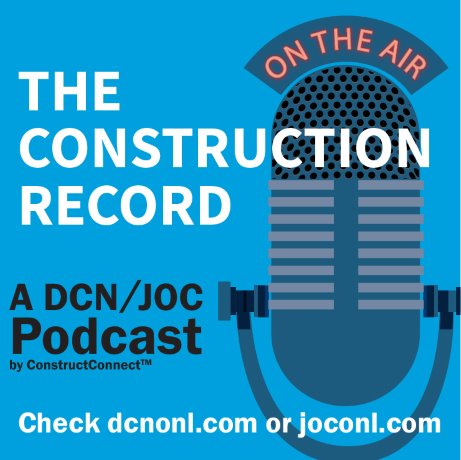The Construction Record, Canada’s only regularly running construction industry podcast, spoke to a trio of public-private partnership experts in the lead up to the 25th annual CCPPP National Conference on Public-Private Partnerships.
Shared here are some highlights from a recent podcast chat The Construction Record had with Mark Bain, Canadian Council for Public-Private Partnerships chair.
The Daily Commercial News and The Journal of Commerce, Canada’s two longest-standing construction industry publications, are the creators of The Construction Record which is available on iTunes, Google Play and at www.dcnonl.com and www.joconl.com.
What are some of the past accomplishments of the council?
The council started back in 1993 so we’ve been around for 25 years now. Over the course of 25 years, this has gone from a bit of an idea about how to deliver infrastructure borrowing on concepts and approaches used in other countries, to a pretty vibrant market.
We’ve got 250 projects or so in the market with $120 billion of activity so it’s been an important catalyst in taking a concept or a vision to reality and helping to improve public infrastructure in Canada.
How has the message and mission of CCPPP evolved over the years as governments embraced P3 models?
In the early days, the organization’s main function and role on the market was explanatory — teaching people almost how to spell P3, what it meant, why the idea had been tested and proven in other markets and why it was at least a reasonable, valid option to consider when generating new projects. That got our pilot projects going which was good and led to the formation of some really world class organizations. Our provincial infrastructure agencies are fantastic and led to a lot of refinement of the idea in Canada, so not a totally made-in-Canada model, but a made-in-Canada evolution of things that have been tried elsewhere.
The council has been there all along from the championing of the idea, to helping people through their first projects, which of course were risky but very important steps to refining their processes and then finally to where we are at now which is to champion the model.
What role did the CCPPP play in creating calm during the 2008-2009 recession?
What we found, as the whole world found when the credit market tightened in 2008-2009, is that source of capital dried up very quickly. There were two forks in the road: one was to abandon the whole model, throw the baby out with the bath water and the other was to try and calmly adapt to changing circumstances.
Canada was more effective than most in taking the position that infrastructure projects, pipelines and agencies that had been set up were all created with the idea that there would be a long-term stable market to create long-term stable infrastructure assets.
So, this bump in the road, although it was very significant, had to be seen as a bump that was temporary in a much longer road. The council was quite helpful under then chair Dale Richmond in convincing the market that it was time to step back and think about what was going on and the rationale for the projects was not purely to advance bank capital into projects, it was to get better infrastructure projects built and delivered on time, on budget and in a way that generated high value for money.
What do you see for the council in the future?
What’s happening next is exciting because we are moving into a new chapter in Canadian infrastructure. I think there is a strong appetite for more infrastructure development and delivery and that happens across the country regardless of whatever party is in power.
I think what we’re seeing is some diversity of sectors and delivery approaches coming up. We had a big wave in Canada of getting new roads and hospitals and courts and that really defined the first 10 to 15 years of the council.
For the last five years and probably over the next five years, I think, we’ll see different activities going and much more activity in urban transit, water and wastewater, telecom, fibre optic and other connectivity. I think we will see much more activity in indigenous communities which are suffering with an infrastructure deficit and I think we’ll see a broadly defined range of smart city initiatives. Those are all exciting things that will be going on in the market in the next five to 10 years.
Our role, as it has been for the last 25 years, is to provide some kind of calm, considered, evidence-based perspective on ways that the public and private sector can work together to deliver important infrastructure. This includes making sure the right projects are done and they are done for the right reasons. Also, that they make the best possible use of public and private resources and most importantly guarantee best possible value for taxpayer dollars.



Recent Comments
comments for this post are closed